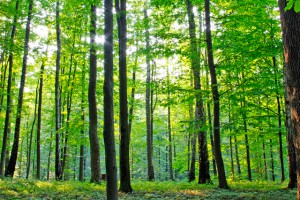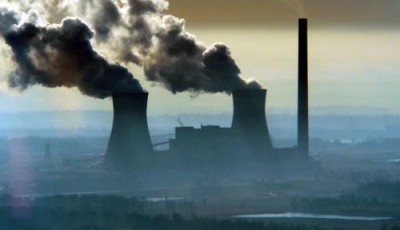Unhealthy forests affect distant ecosystems
 By Tim Radford
By Tim Radford
LONDON, 9 December, 2016 – Ecologists have demonstrated, once again, the global importance of healthy forests. Fell enough woodland in North America, and the consequences make themselves felt in the forests of Siberia.
And clear the tropical rainforest in the Amazon, and the Siberian conifers experience even greater cold and drought. This “teleconnection” confirms that activities in one region can disturb the climate equilibrium in another.
Loss of forests
The research – based entirely on sophisticated computer models – is another reminder that the loss of forests from drought, heat, insect infestation or exploitation matters not just to the local citizens, but to ecosystems far beyond a nation’s shores.
“When trees die in one place, it can be good or bad for plants elsewhere because it causes changes in one place that can ricochet to shift climate in another place. The atmosphere provides the connection,” says Elizabeth Garcia of the University of Washington in the US.
She and colleagues report in the Public Library of Science journal PLOS ONE that they tested extreme forest loss in western North America and in the Amazon to see if they could identify long-term consequences far away.
Forest destruction has a cooling effect because without trees the bare earth reflects more and absorbs less sunlight. Loss of vegetation makes the air more arid. And this seems enough to shift large-scale atmospheric waves and affect precipitation patterns.
Trees in western North America have begun to feel the impact of drought and infestation. Trees in the Amazon have been clear-felled or burned to make way for farmland. So the scientists modelled the consequences of even greater destruction.
“People have thought about how forest loss matters
for an ecosystem, and maybe for local temperatures,
but they haven’t thought about how that
interacts with the global climate”
The loss of canopy in the Canadian and US west slowed forest growth in Siberia, but, paradoxically, South American forests benefited: conditions became cooler and wetter south of the equator.
Wholesale destruction of the Amazon forest also made Siberia more barren but seemed to have a slight positive effect on vegetation in the southeastern US. Loss of Amazon tree cover, however, might help forests in eastern South America, by increasing rainfall.
The computer-based predictions are likely to be tested by unpremeditated experiments in the real world, in the form of forest destruction.
Researchers have repeatedly stressed the threat to the great forests, in the Amazon and worldwide. Foresters have already identified increasing damage to the forests of the US and Canada, and warned of devastating losses in the US southwest.
So, although the research is academic, the threat is all too real.
Global thinking
For the moment, the scientists have a hypothesis, and will test their challenge-the-forest computer game with further and more precise studies. The results are tentative. But it is a reminder of the law of unintended consequences in a world that acts locally, but hasn’t yet learned to think or act globally.
“People have thought about how forest loss matters for an ecosystem, and maybe for local temperatures, but they haven’t thought about how that interacts with the global climate,” says senior author of the report Abigail Swann, an ecosystem scientist at the University of Washington.
She has made a special study of forests, climate change and water demands. “We are only starting to think about these larger-scale implications,” she says.
– Climate News Network







